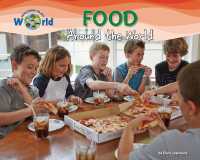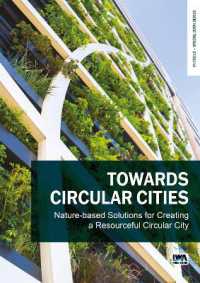- ホーム
- > 洋書
- > 英文書
- > Science / Mathematics
Full Description
Since the late 1980s the dominant theory of human origins has been that a 'cognitive revolution' (C.50,000 years ago) led to the advent of our species, Homo sapiens. As a result of this revolution our species spread and eventually replaced all existing archaic Homo species, ultimately leading to the superiority of modern humans.
Or so we thought.
As Clive Finlayson explains, the latest advances in genetics prove that there was significant interbreeding between Modern Humans and the Neanderthals. All non-Africans today carry some Neanderthal genes. We have also discovered aspects of Neanderthal behaviour that indicate that they were not cognitively inferior to modern humans, as we once thought, and in fact had their own rituals and art. Finlayson, who is at the forefront of this research, recounts the discoveries of his team, providing evidence that Neanderthals caught birds of prey, and used their feathers for symbolic purposes. There is also evidence that Neanderthals practised other forms of art, as the recently discovered engravings in Gorham's Cave Gibraltar indicate.
Linking all the recent evidence, The Smart Neanderthal casts a new light on the Neanderthals and the "Cognitive Revolution". Finlayson argues that there was no revolution and, instead, modern behaviour arose gradually and independently among different populations of Modern Humans and Neanderthals. Some practices were even adopted by Modern Humans from the Neanderthals. Finlayson overturns classic narratives of human origins, and raises important questions about who we really are.
Contents
Preface
1: Nana and flint
2: Neanderthals and birds
3: Lessons from the Arctic
4: The long-tailed duck
5: The white ghost
6: Gibraltar
7: The dynamic world of dunes
8: Lakes and plains
9: The great auk
10: Big eyes
11: Digging in the cave
12: Neanderthal real estate
13: Of seals and limpets
14: Birds of a feather
15: The golden eagle
16: Ambushing the scavengers
17: The big six
18: How to skin a vulture
19: Pigeons and choughs
20: Feeding the vultures
21: The hashtag and the end of the long road to Neanderthal emancipation
Appendix 1 Bird Names used in the Text
Appendix 2 Mammal Names used in the Text
Endnotes
Further reading
Index








